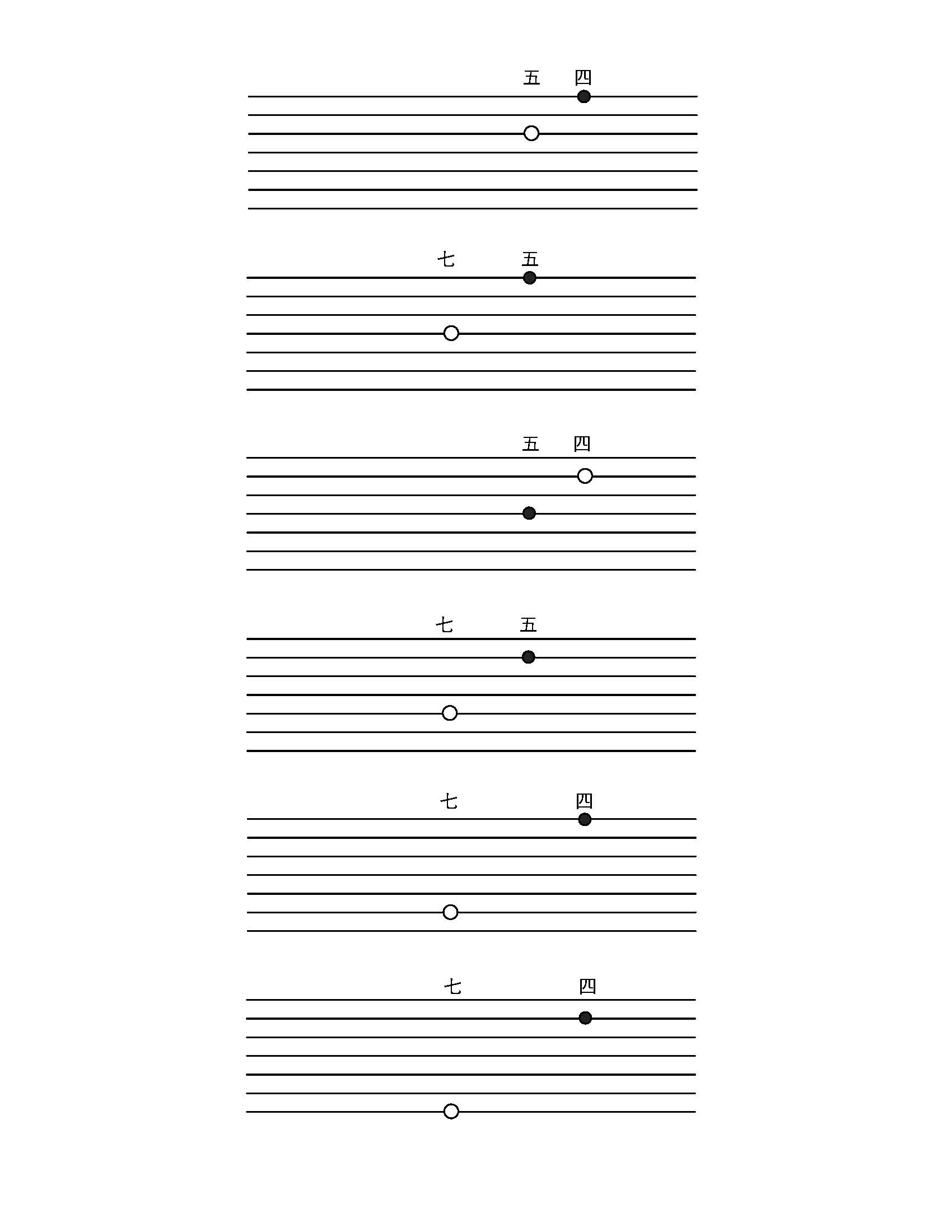SUPERMARKET MUSIC
by CAROLYN CHEN
2005-2014
This is a collection of scores for people in a supermarket, that began with a meditation on the idea of the 24-hour supermarket as a contemporary form of nature. I had started learning guqin, the ancient Chinese 7-string zither associated with Taoist mythology, in lore played on a mountaintop at midnight as a form of meditation. As a car-less Southern California transplant, I had less easy access to mountains, but Ralphs-La Jolla, with its perpetual fluorescent glow and gently flowing Muzak seemed the closest possible alternative for private reflection.
These pieces are a series of undercover actions coexisting with regular supermarket activity, first performed with over 20 participants at Ralphs-La Jolla in February 2010, without explicit permission. When prodded about the activity, a clerk responded, “I don’t know, but as long as they’re shopping, we’re not going to do anything.”
The collection is open and ongoing – new pieces are very much invited.
Small pieces:
Arrange in cart:
– 3 of everything
– Monocrhomes (all yellow, etc)
· Follow each other to form a rainbow
· Dueling teams of colors
– Shakables – sort by shake feel/sound
Cart or Check-out arrangements:
– set all items upside down
– arrange all left, all right, triangles, smiles, civil war battle formations
– order in descending levels of healthiness
– while belt is moving, walk in place/running man
– buy all the same items again, exactly
– multiple people with the same items, same order
Buy dinner. Buy what you need for the week. Shop aspirationally. Shop like your mother.
* * *
Traveling music for freezers, 2007
As a group, tune to a freezer. Sustaining the chord, walk away, meet another freezer. Interfere. Slowly, retune to the new environment. Repeat.
Possible:
– Many groups, many freezers.
– A duel.
– Negotiation.
– Heads inside and out.
* * *
Aisle music, 2005
Players:
– one pusher (may be larger) of cart
– a few sitters (may be smaller) in cart
Play:
– Pusher chooses an aisle to traverse.
– Sitters choose different viewpoints from within the cart.
– Pusher pushes, sitters sing the name of objects passing – pitch beginning in unison, changing according to the height of the objects in view.
– Play ends when aisle has been cleared.
On pushing:
– Pusher should begin slowly, listening to sitters’ cues. Conflicting cues are resolved at pusher’s discretion.
– Indefinite pauses are possible.
– Backwards pulling is possible.
On sitting:
– Sitters begin pp on unison, changing pitch with the contour of package shapes – if this proceeds beyond vocal capabilities, return to beginning pitch.
– Crescendo for accelerated pushing; decrescendo for a ritardando.
– If view of product is partially obstructed by a shopper, sfz on visible syllables. Silence if view is completely obstructed.
– If speed of cart makes reading infeasible, sitters may rest, or turn to face the pusher and sing the pusher’s name in protest. (Pitch to vary with height of pusher.)
* * *

Transcription of guqin tuning for supermarket
There must be some way in which the qualities of different places can be adjusted to align. Follow the map.
Sound a line.
Sound another line. Compare with the first. Adjust. Repeat until they align.
Sound a tuned line in another way. Find a new line and repeat above.
An ending comes when all desired lines are aligned.
A guqin is seven-string Chinese zither, often played alone in nature. Its unique tablature notation system does not directly dictate pitch or rhythm, but depicts in detail the movement of the player’s fingers and their quality of touch. The guqin is a quiet instrument, the sound of its silk strings often drifting into silence before the end of a phrase, leaving the listener to imagine its completion as the hand traces through the rest of its path. The music, then, might be somewhere between where the hands are, and where the mind is.
The following map shows an order in which strings can be tuned. Each block of seven lines shows a step in the tuning process, starting by tuning the fifth harmonic of the third string to the fourth harmonic of the first string. Dots are where the harmonics lie. Black dots are fixed; white dots, adjusting. The map may be plotted onto supermarket shelves, or any other grid, physical or otherwise.
Sounding a line must involve some kind of contact with it, although it need not result in a particular sound. Somehow, some quality of the line is expressed and responded to. This may involve choosing an object in an aisle and a quality of the object.
Some qualities in which objects may align: packaging, contents, color, shape, density, viscosity, nutrition, shininess of material, hardness, temperature, sound produced by touch, responsiveness to touch, place of origin, distance from place of origin, position in relation to aisle, utility, desirability, shelf-life, diversity of contents, aura, quality of imperfection, closeness to corn syrup, lifestyle evoked by advertising, duration or speed of consumption, life-preserving capability, transparency, opaqueness, smell, nostalgic value.
Adjusting may involve shifting the object, choice of quality attended to, way of sounding, or state of mind. Tuning includes external and internal alignment. It is not only the adjustment of objects or sounds, but the listening and responding of the person to the external world.
Actions are non-theatrical and purposive. There is an order to the process. The guqin is a quiet instrument.
